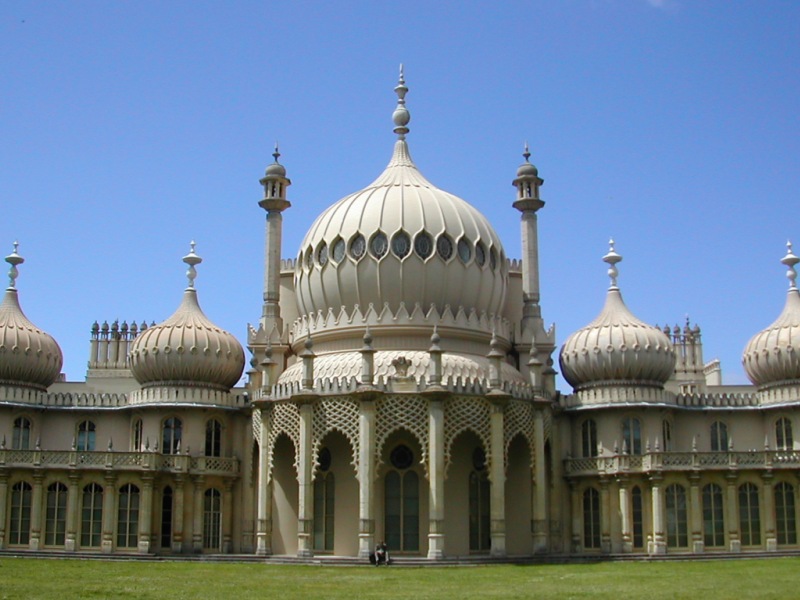Twelve Days of Christmas ( or Holiday of Your Choice) at Wonders and Marvels
One of my favorite history sites on the internet, Wonders and Marvels, is celebrating the holidays by giving away twelve signed copies of books by regular contributors, including Mankind:The Story of All of Us. It's a great selection of history and historical fiction, if I do say so myself.
A new book will go up each day from December 6 through December 17. All you have to do to enter the contest for a specific book is to comment on the related post. You can enter the drawing for as many of the books as you like. Winners will be announced on December 24.
Happy, Merry, Blessed, or just plain Jolly.
Road Trip Through History: The Royal Pavilion at Brighton
Visiting the Royal Pavilion at Brighton was a sentimental journey for me.
As some of you may know, I did my PhD on the 20 year plan--in part because I kept wandering down odd and fascinating side roads that didn't end up in the final dissertation.* Two of those academic dead ends were chinoiserie and Indian influence on English buildings. They collide magnificently in George IV's little seaside cottage in Brighton.
The Pavilion started out as a farmhouse where George, then the Prince of Wales, happily canoodled with his long-term mistress, Mrs. Fitzherbert.** With the help of architect John Nash, the prince transformed his farmhouse over time into a royal fantasy: a Moghul palace on the outside,

Photo courtesy of Xjkkp via Wikapedia
"Chinese" interior decoration on the inside,
and a kitchen that made me want to pull on an apron and make a feast.
It was thrilling to see it all in real life after years of looking at plates.
Beyond the thrill of seeing the buildings, I was fascinated by two special exhibits: one about the use of the Pavilion as a hospital for Indian soldiers in World War I and the other an exhibit on George IV's daughter, Princess Charlotte. The exhibit title calls Charlotte the forgotten princess--it's a fair description. Even though I've spent a fair amount of time reading about Regency England, Charlotte had always been a little vague in my imagination. George IV's only legitimate child, Charlotte was in some ways the alternate Victoria. Like her famous cousin, she was a short, plump, slightly Germanic princess with a stubborn streak. She refused to marry the man her father wished her to marry, the Prince of Orange (nicknamed "the Young Frog"), choosing instead the less eligible but handsome Prince Leo of Saxe-Coburg-Gotha***. Unlike her father and grandfather, the young princess was popular with the British people. Again like Victoria, she seems to have been happy with her German prince. When she died in childbirth in 1817 at the age of 21, the nation went into mourning.
As the only legitimate grandchild of George III, Charlotte's death left the succession uncertain--and led her "wicked uncles" to hurry into matrimony. Victoria, daughter of the Duke of Kent and his brand-new wife, was born in 1819.
The exhibit left me hungry to know more about Princes Charlotte. Can anyone recommend a good book on the subject?
* This may not come as a surprise to those of you who have been reading along for a while now.
** George's relationship with Mrs. Fitzherbert was complicated. In an act of have your cake and eat it too, they were married in what they both knew was an illegal ceremony years before he took the throne and were involved in a tumultuous on and off again relationship for the rest of his life. Their marriage did not stop George from later marrying his cousin Duchess Caroline of Brunswick, with whom he had a tumultuous, permanently off-again relationship for the rest of his life.
***Later the infamous King Leopold of Belgium, the butcher of the Congo.
La Folie Baudelaire
In La Folie Baudelaire Roberto Calasso describes the life, work, and world of symbolist poet Charles Baudelaire in terms of an image borrowed from nineteenth century French critic Charles Saint-Beuve: the "highly decorated, highly tormented but graceful" architectural extravagance known as a garden folly. Saint-Beuve used the image to disparage Baudelaire's work. In Calasso's hands it becomes high praise.
Part of an on-going exploration of the nature of modernity that began with the acclaimed Ruin of Kasch (1983), La Folie Baudelaire is not a biography of Baudelaire, though the reader will learn much about the poet's life along the way. Instead Calasso uses Baudelaire and his writing as a lens through which to consider the literary and artistic world of nineteenth century Paris. Baudelaire leads Calasso and the reader to poets, painters, and prostitutes, to Gautier and Flaubert, to Ingres, Delacroix, and Degas, to romanticism, decadence, symbolism and, ultimately, modernity.
La Folie Baudelaire is fascinating, but it is not an easy read. Even the best-educated reader may want to keep a dictionary close at hand. Calasso's style is both erudite and lyrical--as allusive as that of the poet who stands at the center of the work. Instead of a narrative history, the work is constructed as a series of loosely linked meditations that move back and forth through time--an innovative and eccentric format developed by Calasso in his earlier works. Despite its challenges, any reader interested in the period--or the poet--will find La Folie Baudelaire worth the effort.
This review previously appeared in Shelf Awareness for Readers.








